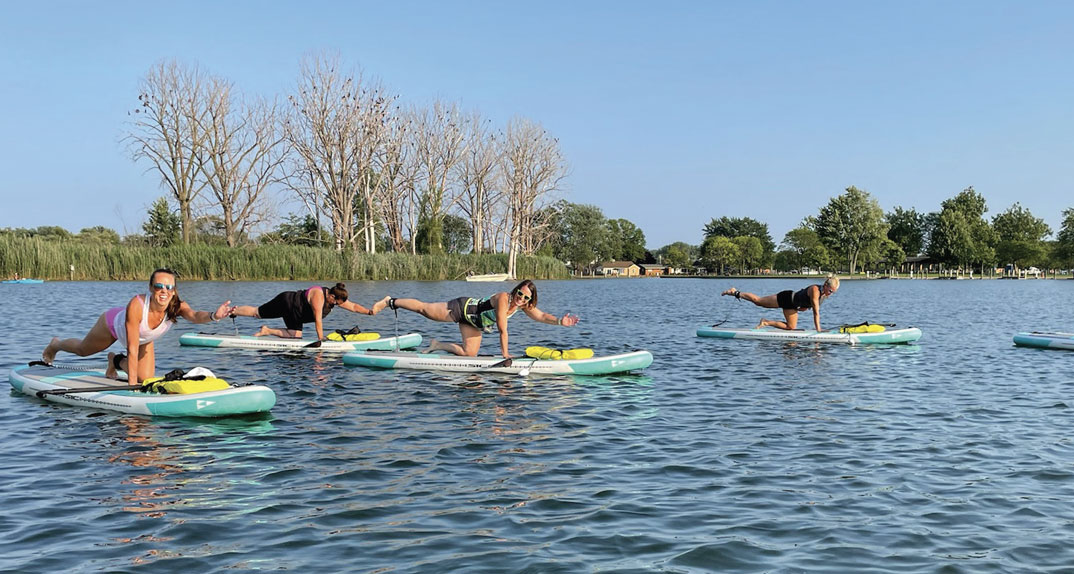Balancing on a Board

By Julie Miller, MA, LPC
Have you ever felt drawn to look at a body of water or stare out at the horizon? Being on or around water can help ease anxiety or stress, so it’s no wonder that we find ourselves seeking it. Paddleboarding not only calms our worries, but also adds benefits like connecting to nature, movement and fitness.
Getting on a Stand Up Paddleboard (SUP) for the first time can be a little intimidating for some, but taking a class will ease your worries and provide proper technique to maximize enjoyment. Here are a few basic tips to help you get started:
- Get to know your gear. If you are using an inflatable paddleboard, be sure to fill it to its recommended psi (usually between 12-15 psi).
- Set your paddle height about 2 ½ inches above your head or half a shaka! Proper height of your paddle will help make your experience more enjoyable.
- Check the weather. Look for possible storms cells that could develop and see what the wind report will be. Always play it safe!
- Be sure to wear a personal floatation device as required by the coast guard. I also recommend having a leash, attaching you to your board.
- Begin your paddle in the direction of the wind. Paddling upwind will prevent you from going too far, too fast and having to work more when you are tired later in the paddle.
Now you are ready to reap the many physical and mental health benefits of SUP. Here are some top benefits.
- Core Strength: Balancing on the board engages your core muscles, improving core strength and stability over time.
- Cardiovascular Fitness: Paddling is a great cardiovascular exercise, improving your heart health and stamina.
- Low Impact: Paddleboarding is a low-impact exercise, making it gentle on joints while still providing a great workout.
- Improves Balance: Regular SUP use can enhance your balance and coordination skills, which are beneficial for overall physical performance and reducing your risk of falls.
- Stress Reduction: Being out on the water, enjoying nature and engaging in physical activity can reduce stress and promote mental well-being.
- Full-Body Workout: Paddling works various muscle groups, including arms, shoulders, back and legs, providing a comprehensive full-body workout.
Paddleboarding is a great tool to add a sense of fun, adventure and community to your life. It’s also a great activity to plan with a group, meet new people while on the water, or just escape into your own serenity. Now that you are no longer land locked, you can explore new water ways while on a paddleboard. There is something for everyone in Stand Up Paddleboarding.
Julie Miller, is a counselor that combined her love of athletics, wellness and water into her own adventure company called, Uplift Adventure Retreats. Find her classes, events and retreats at upliftmindbodyspirit.com.

